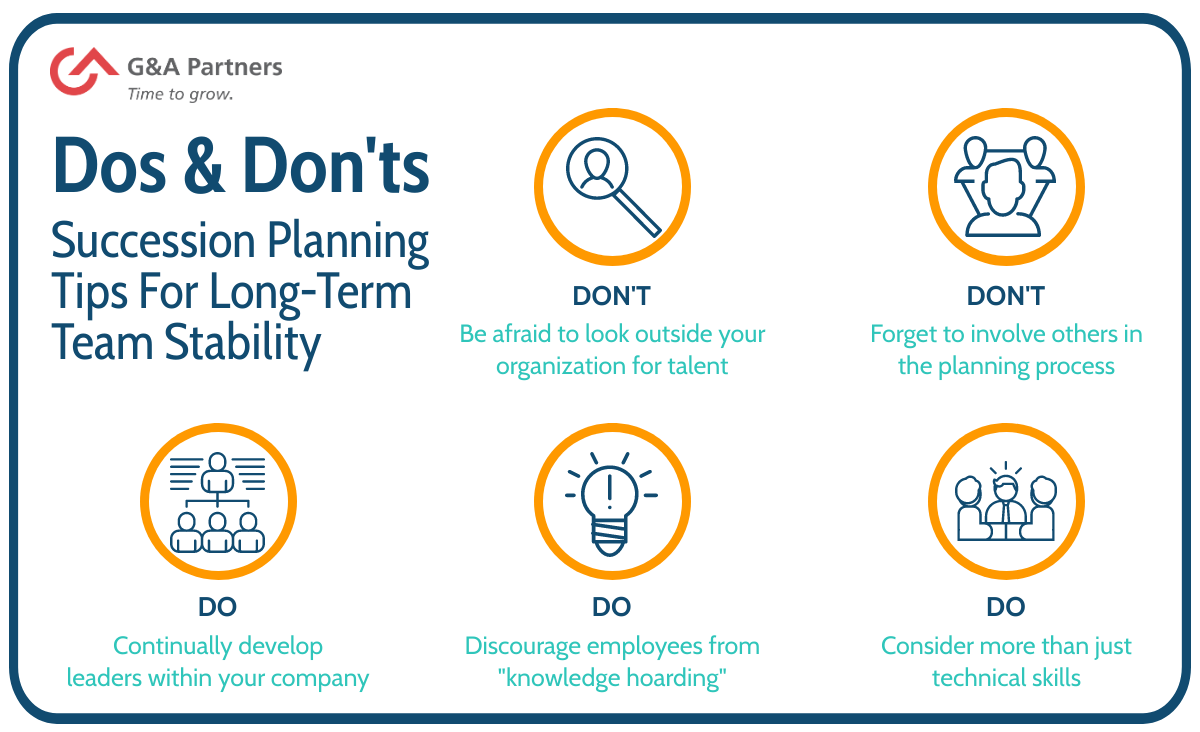- HR Speak
- Contributed Article
- Succession Planning Dos & Don’ts
What you should start (and stop) doing to plan for long-term success
While turnover is inevitable, your company can minimize its impact by preparing now, says G&A Partners Sr. HR Advisor Tracy Winn.

Succession planning is a long-term planning process that involves analyzing current needs and anticipating future needs and then identifying individuals (either current employees or candidates) who possess the necessary skills and abilities to fill a particular role.
In an article for CU Management, Tracy Winn, a senior HR advisor in G&A Partners’ Salt Lake City office, shares how employers (specifically, credit unions) can use effective succession planning strategies to prepare for vacancies in important roles before they happen.

DON’T be afraid to look outside the organization for talent
“There are several advantages to recruiting outside talent, the main one being the fresh eye and objectivity that someone not already familiar with your processes might be able to provide,” Winn said. “While succession planning is all about building a deep bench of talent to ensure stability and continuity, you must always be prepared to look outside the organization in case your plan has to change.”
DON’T forget to involve others in the planning process
“One of the worst things you can do when grooming an employee for leadership is to not talk to them about their goals and aspirations,” Winn said. “Sound out the employee(s) you’re considering as part of your succession plan to make sure that your goals for them are in line with their own career plans.”

DO continually develop leaders within your company
“Hiring from within is beneficial not just because it can eliminate the need for a potentially costly search, but because you are identifying future leaders in your own organization while providing opportunities for learning and development,” Winn said. “Building talent and successors within the company helps maintain brand identity, increases retention and employee morale, and reduces the learning curve for replacements.”
DO discourage employees from “knowledge hoarding”
“When an employee feels they are going to be let go or is planning for retirement, they might hoard their knowledge in the hopes that it shows how invaluable they are,” Winn said. “Creating process documentation, updating job descriptions and cross-training will prevent knowledge hoarding.”
DO consider more than just technical skills
“A good succession plan should be about more than just fulfilling a job description,” Winn said. “Gear your manager training toward not just how to do the job from day-to-day, but also how to lead and inspire teams.”



